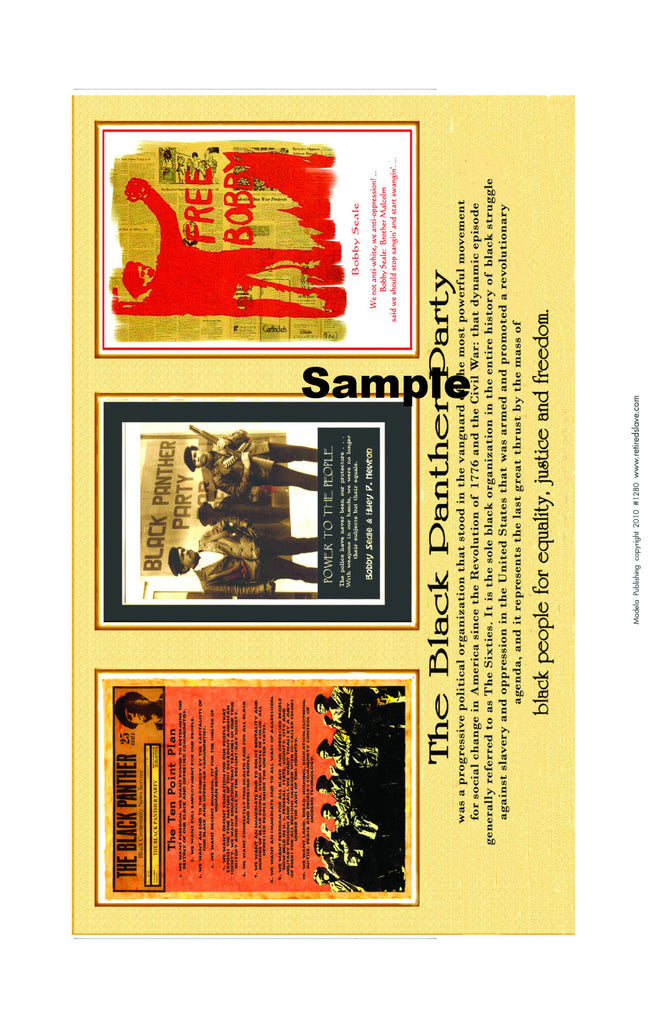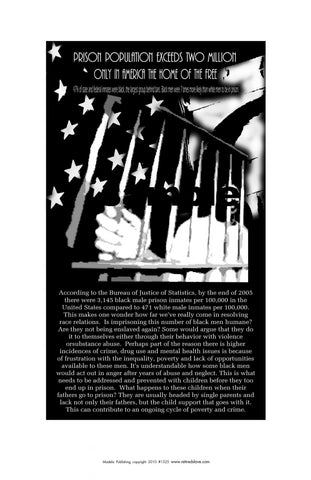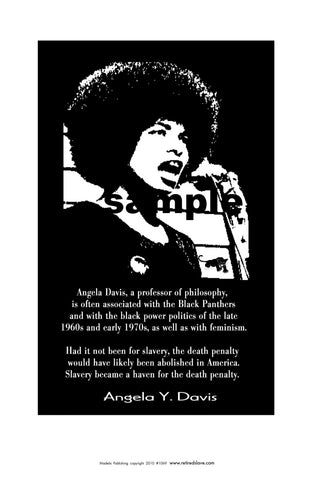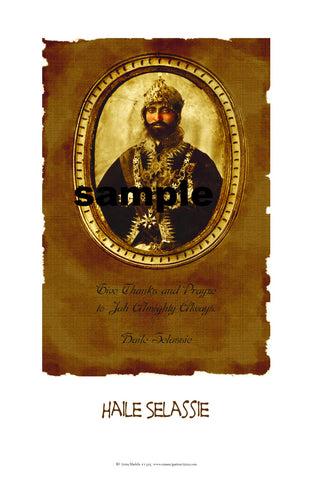Black Panther Party #1280
$ 10.00
Caption from poster__
The Black Panther Party
Was a progressive political organization that stood in the vanguard
of the most powerful movement for social change in America since
the Revolution of 1776 and the Civil War: that dynamic episode
generally referred to as The Sixties. It is the sole black organization
in the entire history of black struggle against slavery and oppression
in the United States that was armed and promoted a revolutionary
agenda, and it represents the last great thrust by the mass of
black people for equality, justice and freedom.
The Party's ideals and activities were so radical, it was at one time assailed
by FBI chief J. Edgar Hoover as "the greatest threat to the internal security
of the United States." And, despite the demise of the Party, its history and
lessons remain so challenging and controversial that established texts and
media would erase all reference to the Party from American history. The
Black Panther Party was the manifestation of the vision of Huey P. Newton
, the seventh son of a Louisiana family transplanted to Oakland, California
. In October of 1966, in the wake of the assassination of black leader
Malcolm X and on the heels of the massive black, urban uprising in Watts,
California and at the height of the civil rights movement led by Dr. Martin
Luther King, Jr., Newton gathered a few of his longtime friends, including
Bobby Seale and David Hilliard, and developed a skeletal outline for this
organization. It was named, originally, the Black Panther Party for Self
Defense. The black panther was used as the symbol because it was a
powerful image, one that had been used effectively by the shortlived
voting rights group the Lowndes County (Alabama) Freedom Organ-
ization. The term "self defense" was employed to distinguish the Party's
philosophy from the dominant nonviolent theme of the civil rights move-
ment, and in homage to the civil rights group the Louisiana based
Deacons for Defense. These two, symbolic references were, however,
where all similarity between the Black Panther Party and other black
organizations of the time, the civil rights groups and black power groups,
ended.Immediately, the leadership of the embryonic Party outlined a Ten
Point Platform and Program (see the end of this article for full text). This
Platform & Program articulated the fundamental wants and needs, and
called for a redress of the longstanding grievances, of the black masses
in America, still alienated from society and oppressed despite the
abolition of slavery at the end of the Civil War. Moreover, this Platform
& Program was a manifesto that demanded the express needs be met
and oppression of blacks be ended immediately, a demand for the right
to self defense, by a revolutionary ideology and by the commitment
of the membership of the Black Panther Party to promote its agenda for
fundamental change in America.
Now available 11" x 17"
Print with Black Frames $25.00
For 24" x 36' Size prints
please call 678-608-7892 to order




